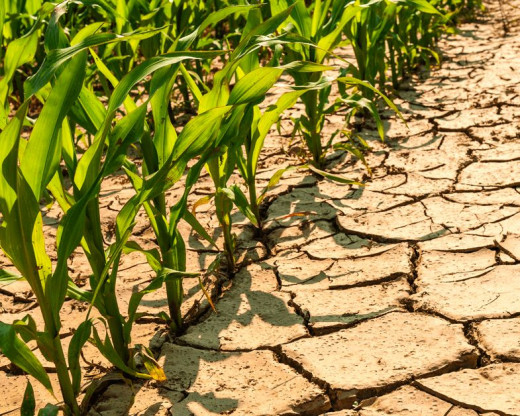Drought-Tolerant Crops That Can Thrive In Arid Climates

Drought-Tolerant Crops That Can Thrive In Arid Climates
Are you tired of watching your crops wither and die during long periods of drought? Are you looking for ways to grow food sustainably in arid climates without using excessive amounts of water? Look no further than drought-tolerant crops! These hardy plants have evolved to thrive in dry conditions, making them the perfect solution for farmers and gardeners facing water scarcity.
In this blog post, we'll explore some of the best drought-tolerant crops out there and share tips on how to grow them successfully. Let's get started!
Drought-tolerant Crops
Drought-tolerant crops are plants that can withstand long periods of drought and still produce yields. These crops have adapted to survive in dry regions where rainfall is low, making them ideal for arid climates. They require less water than conventional crops, which makes them an attractive option for farmers who want to conserve water resources.
Some examples of drought-tolerant crops include sorghum, millet, quinoa, and chickpeas. These crops have deep root systems that allow them to access moisture deep below the surface of the soil. They also have mechanisms that help them retain water more efficiently than other plants.
Another advantage of growing drought-tolerant crops is their resilience against pests and diseases. Since these plants are naturally resistant to harsh conditions, they are less likely to suffer from infestations or infections caused by pathogens.
Drought-tolerant crops offer a sustainable solution for food production in areas with scarce water resources. By reducing the amount of irrigation needed and increasing resistance against environmental stressors, they provide a viable alternative to traditional farming methods that rely heavily on water availability.
The Benefits of Drought-tolerant Crops
Drought-tolerant crops are becoming increasingly popular due to their numerous benefits. One of the main advantages is that they require less water than conventional crops, making them ideal for arid climates where water is scarce. This means that farmers can save on irrigation costs and reduce their reliance on groundwater or surface water sources.
Another benefit of drought-tolerant crops is that they are more resilient to extreme weather conditions, such as heatwaves and droughts. This makes them less susceptible to crop failures, which can have devastating effects on local communities who rely on agriculture for their livelihoods.
Furthermore, growing drought-tolerant crops can help combat climate change by reducing greenhouse gas emissions from agricultural practices. Conventional farming methods often involve large amounts of fertilizers and pesticides, which contribute significantly to global warming. By using more sustainable farming practices with drought-tolerant crops, farmers can reduce their carbon footprint and promote environmental sustainability.
In addition to these environmental benefits, there are also economic benefits associated with growing drought-tolerant crops. These crops tend to be more profitable than traditional ones because they require fewer inputs in terms of water and fertilizer. This means that farmers can generate higher yields while keeping production costs low, resulting in greater profits overall.
The benefits of growing drought-tolerant crops cannot be overstated. From saving money on irrigation costs to promoting environmental sustainability and boosting profitability, it's clear why these plants are gaining popularity around the world as a viable solution for feeding our planet's growing population amidst changing climate conditions.
How to Grow Drought-tolerant Crops
Growing drought-tolerant crops requires some careful planning and attention to detail. Here are a few tips to help you get started:
1. Choose the right crops: Look for plants that are naturally adapted to arid climates, such as succulents, cacti, and other desert-loving species.
2. Prepare your soil: Make sure your soil is well-draining and has plenty of organic matter to retain moisture. Adding compost or mulch can help improve soil quality in arid regions.
3. Water wisely: Instead of watering frequently, try deep watering less often. This will encourage plants to develop deeper root systems that can better withstand drought conditions.
4. Use companion planting: Planting certain species together can help reduce water loss from evaporation and create microclimates that support each other's growth.
5. Consider drip irrigation or rainwater harvesting: These methods can help conserve water by delivering it directly to plant roots where it's needed most.
By following these tips, you'll be well on your way to growing healthy, vibrant crops even in the toughest of conditions!
In conclusion, drought-tolerant crops are an essential aspect of agriculture in arid climates. They not only help farmers save water and reduce costs but also contribute to food security in regions with scarce rainfall. With the right techniques and knowledge, growing these crops can be highly rewarding for both small-scale and large-scale farmers.
By choosing to cultivate drought-tolerant crops instead of traditional ones that require more water, we can help preserve our precious natural resources while still meeting the demands of a growing global population. So why not consider incorporating some of these resilient plants into your farming practices today? Not only will you be helping the environment, but you'll also be investing in a more sustainable future for all.
Comments
Post a Comment